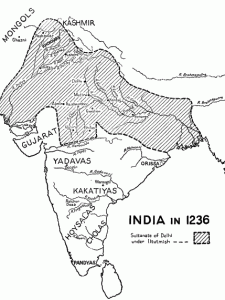While I’m waiting for the History of the Medieval World‘s final production step (Norton usually sends me the index to proof just before the book goes to the printed), I’m in one of my very favorite writing phases on the third volume (the History of the Renaissance World, in case you were wondering). I’m digging out the what-happened and putting it all in chronological order. I don’t have to worry about making it readable, I don’t have to chapter it (so I don’t have to labor over beginnings and ends), I don’t have to decide what stays in and what gets axed. I just get to read and make notes. It’s like taking a pleasantly energetic walk through fascinating and unfamiliar countryside (unlike the actual first-draft composition, which is more like running an ultra-marathon while juggling).
I also get to uncover primary sources that I’ve never heard of and add them to my “consult for first draft” list. Which means I have to find copies written in a language I can actually read.
Yesterday I was researching the Indian kingdom of Orissa,on the eastern coast of the subcontinent, between the Godavari and Mahanadi rivers (map below courtesy of the South Asia Coin Group):

One of my reference works informed me that, in 1361, the Sultan of Delhi attacked the king of Orissa, “massacring the unbelievers, demolishing their temples, hunting elephants, and getting a glimpse of their enchanting country”–the quote is footnoted as coming from the fourteenth-century chronicle Tarikh-i-Firoz Shahi
I always try to find the primary sources rather than relying only on the scholarly studies of them, so my next step was to look this up on WorldCat, a wonderful integrated catalog of libraries all over the world. A search for the title revealed at least three different English translations (my other choices were Urdu, Persian, and Hindi. Hmm. None of them really working for me). I’m completely unfamiliar with this source, so I went over to Google books and typed in a search for “Tarik-i-Firoz Shahi.” That gave me some idea of which of the English translations is most often cited by scholars who actually do fourteenth-century Indian history (I don’t even come close to qualifying).
I decided my best bet was the translation by R. C. Jauhri, published by Sundeep Prakashan of New Delhi. So I clicked on the title and entered my zip code, which told me that the translation was not in the William & Mary library. I keep a booklist on my desktop: I can find it at the Library of Congress the next time I go to D.C., at the Duke University library the next time I make to down to visit my friend Lauren; or in the Barnard stacks at Columbia when I’m in Manhattan. I’ve got the list organized by city, so that whenever I travel I can decide what books to consult when I reach my destination.
I love this part. It’s like doing detective work. It’s low pressure. It doesn’t demand creative energy.
In fact, I could do it forever. Which is why I put a date on my calendar in big black letters that says STOP RESEARCHING. START WRITING.
Yes Yes!. Keep writing. In some weeks I’ll start to read your 1st book and just knowing the idea of publishing a 4 volume(whole world history) makes it great, it’s what is needed.
Interesting entry. I’ve wondered how one goes about researching the history of the world. How can you narrow the sources down to a workable list to digest and draw from? This post gives a good look, but how do you know where to stop? How do you know when you’ve got enough? You mention “One of my reference works informed me that…” What reference work is that? I very curious about this. Thanks!
Could you finally get Dr Jauhri’s translation?